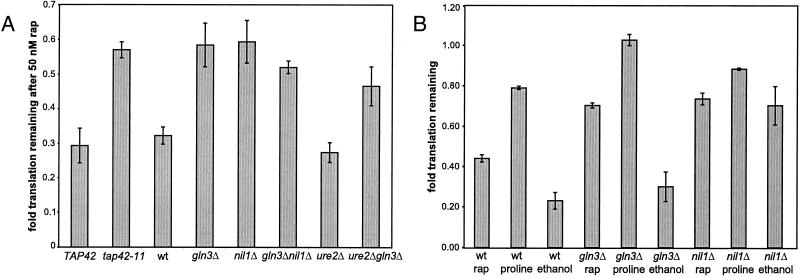Figure 1.
The Tor proteins regulate translation through Gln3p and Nil1p. (A) Strains CY4927 (wild type, wt), CY4928 (tap42-11), PM38 (wild type), PM71 (gln3Δ), MS221 (nil1Δ), PH2 (ure2Δ), and P40-1A (gln3Δ ure2Δ) were treated with 50 nM rapamycin for 30 min and then labeled with tritiated amino acids for another 30 min. After the second 30-min period, total protein was trichloroacetic acid precipitated and counted. Fold translation remaining is defined as counts in the rapamycin-treated samples divided by counts in the untreated samples, normalized for cell density. Error bars span 1 SD about the mean for at least three experiments performed. (B) The indicated strains were grown to logarithmic phase in a synthetic glucose with ammonium sulfate medium (SD + AS), pelleted, and resuspended in water. These suspensions were added to either fresh SD + AS medium, SD + AS medium containing 50 nM rapamycin (rap), synthetic glucose with proline medium (proline), or synthetic ethanol with ammonium sulfate medium (ethanol). The remainder of the assay was performed as in A. Normalized translation was calculated relative to the SD + AS sample and the error bars shown span 1 SD about the mean of three experiments performed.

